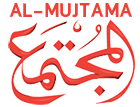The book The Quran - An Eternal Challenge by Dr. Muhammad Abdullah Draz is one of the most significant contemporary works written to elucidate the miraculous nature of the Qur'an. The author discusses the thematic unity of Qur'anic Surahs and provides evidence and arguments to prove that each Surah of the Qur'an resembles a cohesive structure. The book is divided as follows:
First Chapter: Definition of the Qur'an and the Difference Between It and Other Sacred Qudsi and Prophetic Hadiths: The author explains the linguistic and etymological meanings of “Qur'an” and “Al-Kitab (the Book),” the secret behind their names, and why the Qur'an is uniquely preserved and immune to distortion among the revealed scriptures.
Second Chapter: Proving the Divine Origin of the Qur'an: This chapter establishes that the Qur'an is from Allah, citing as evidence Allah's reproaches of Prophet Muhammad (peace be upon him) in permissible matters and mentioning the testimony of polytheists who acknowledged the Prophet's truthfulness in both speech and action.
In this chapter, the author outlines four stages:
Stage One: Refuting the claim that the Qur'an is Muhammad's own speech, emphasizing that the meanings of the Qur'an are beyond human intelligence and deduction, and inaccessible except through divine revelation. Examples include the detailed stories of the prophets and the people of the cave.
Stage Two: Denying the existence of any human teacher for Muhammad (peace be upon him).
Stage Three: Highlighting the phenomenon of divine revelation and its indication of the Qur'an’s source.
Stage Four: The essence of the Qur'an reveals its divine origin, addressing three aspects of its miraculous nature: linguistic, scientific, and legislative, while responding to misconceptions about the linguistic miracle of the Qur'an.
The author concludes the book with a model study of the Qur'anic miracle for Surat Al-Baqarah, dividing his analysis into an introduction, four main objectives, and a conclusion as follows:
- Introduction: Defining the Qur'an and highlighting its guidance.
- First Objective: Inviting all people to Islam.
- Second Objective: Specifically inviting the People of the Book to abandon falsehood and embrace the true religion. This section spans around 123 ayahs and includes mentions of the Israelites with Musa, their salvation from Pharaoh and the sea, their repentance being accepted, the trial of Ibrahim with commandments, his building of the Ka'bah with Ismail, the command to change the direction of prayer toward the Sacred House, and the mention of Al-Safa and Al-Marwah.
- Third Objective: Detailed presentation of the laws of Islam in 106 ayahs, covering matters such as patience in adversity and hardship, rulings on fighting in the Sacred Mosque, and family matters like divorce, khul' (the separation of the wife in return for a payment), maintenance, and similar issues.
- Fourth Objective: Emphasizing the religious motivation to adhere to these laws and mentioning the truths of faith and Islam.
- Conclusion: Introducing those who responded to this comprehensive call, as mentioned in the last two ayahs of Surat Al-Baqarah.
-------------------------------------------------------------

